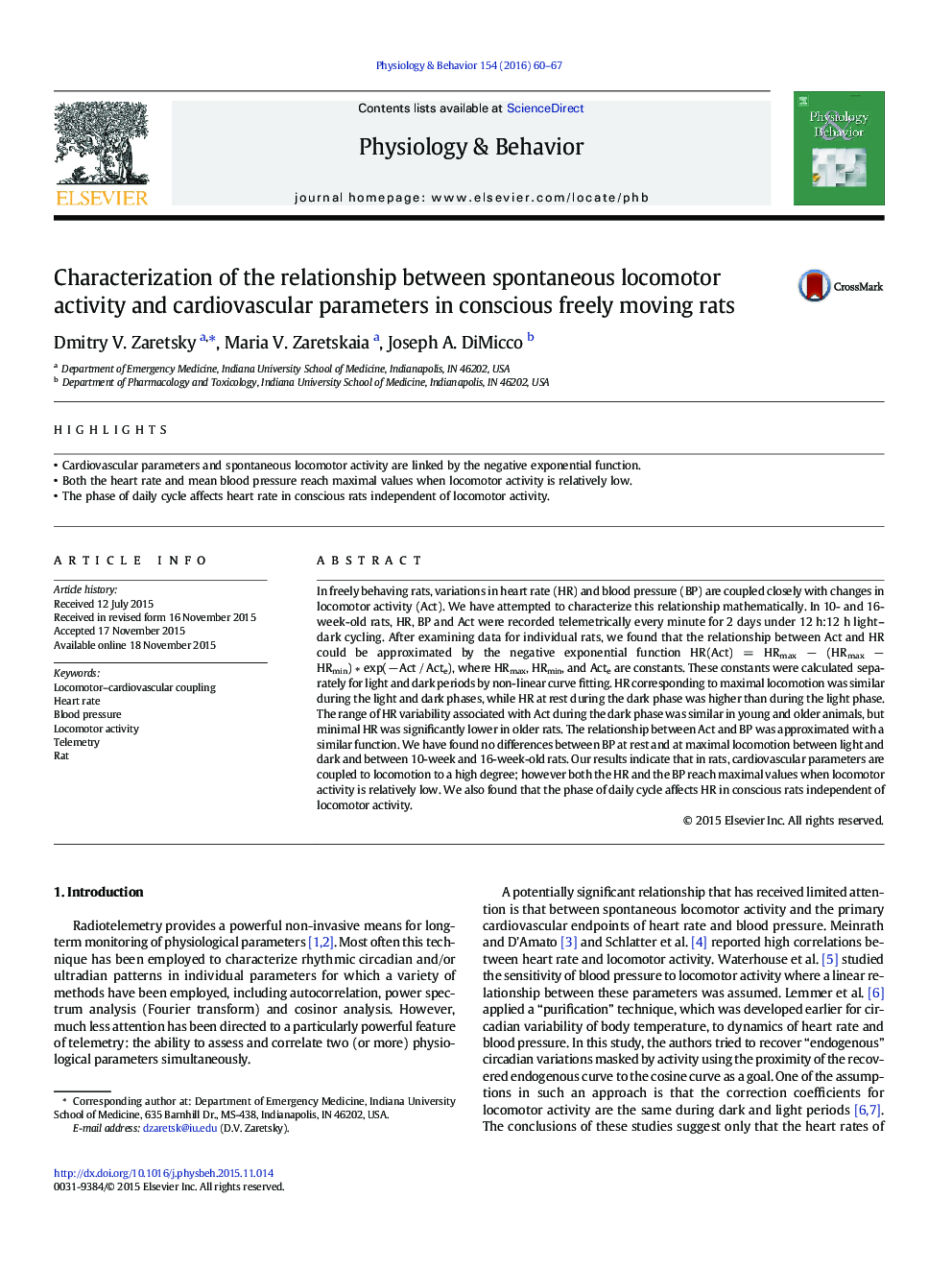| Article ID | Journal | Published Year | Pages | File Type |
|---|---|---|---|---|
| 5923129 | Physiology & Behavior | 2016 | 8 Pages |
Abstract
In freely behaving rats, variations in heart rate (HR) and blood pressure (BP) are coupled closely with changes in locomotor activity (Act). We have attempted to characterize this relationship mathematically. In 10- and 16-week-old rats, HR, BP and Act were recorded telemetrically every minute for 2 days under 12 h:12 h light-dark cycling. After examining data for individual rats, we found that the relationship between Act and HR could be approximated by the negative exponential function HR(Act) = HRmax â (HRmax â HRmin) â exp(â Act / Acte), where HRmax, HRmin, and Acte are constants. These constants were calculated separately for light and dark periods by non-linear curve fitting. HR corresponding to maximal locomotion was similar during the light and dark phases, while HR at rest during the dark phase was higher than during the light phase. The range of HR variability associated with Act during the dark phase was similar in young and older animals, but minimal HR was significantly lower in older rats. The relationship between Act and BP was approximated with a similar function. We have found no differences between BP at rest and at maximal locomotion between light and dark and between 10-week and 16-week-old rats. Our results indicate that in rats, cardiovascular parameters are coupled to locomotion to a high degree; however both the HR and the BP reach maximal values when locomotor activity is relatively low. We also found that the phase of daily cycle affects HR in conscious rats independent of locomotor activity.
Related Topics
Life Sciences
Biochemistry, Genetics and Molecular Biology
Physiology
Authors
Dmitry V. Zaretsky, Maria V. Zaretskaia, Joseph A. DiMicco,
